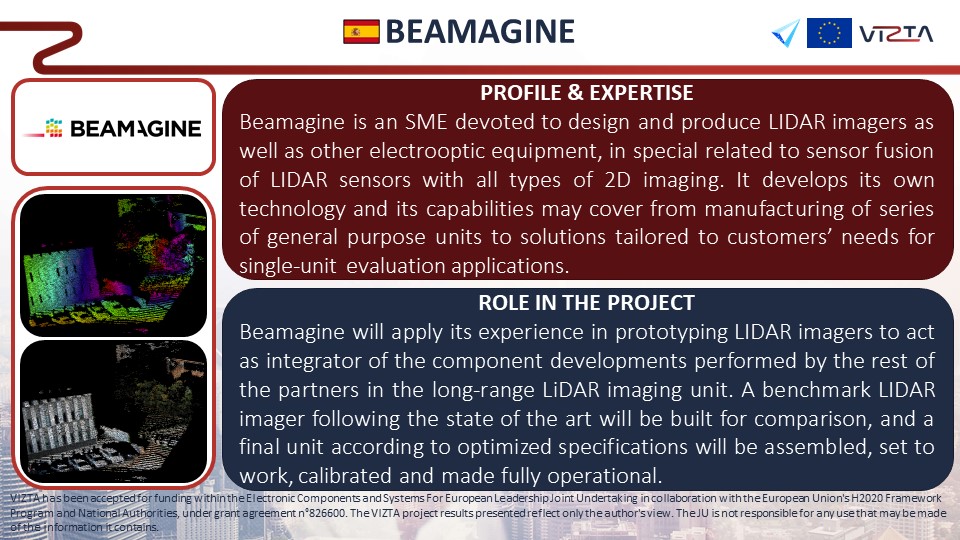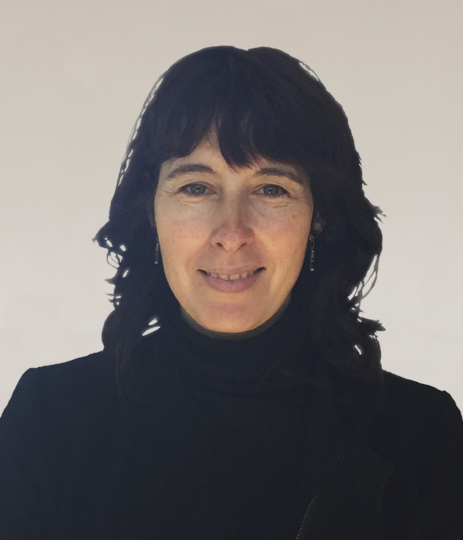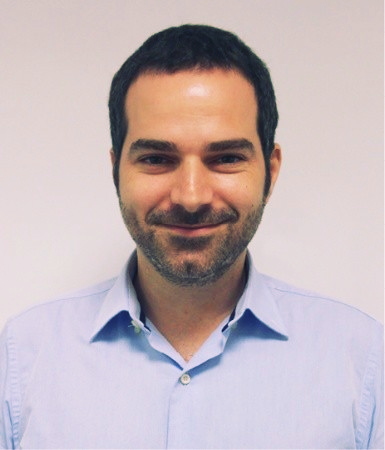Profile & expertise
Beamagine is an SME based in greater Barcelona, devoted to design and produce LiDAR imagers as well as other electrooptic equipment, in special related to sensor fusion of LIDAR sensors with all tyes of 2D imaging.
LiDAR sensors are key to all kinds of autonomous vehicles due to its ability to register dense 3D information of the vehicle surroundings (pedestrians, moving objects) in real time. Lidar imaging allows obtaining 3D images in real time using compact cameras, based on laser pulses whose Time-of-Flight to a distant target is measured. This pointwise measurement is converted into an image using some scanning strategy, enabling imaging with high resolution at very long distances.
A lidar image is a point cloud with full 3D information (x,y,z) of the scene, so it is a perfect complement to machine vision solutions requiring redundancy or depth information. In a typical configuration, our fully solid-state sensors attain large distances in full daylight (up to 200m) without moving elements, to deliver highly detailed images (0.2Mpx) or real time video.
Beamagine develops its own technology and has research contracts and agreements with different international companies, institutions and universities. Twelve international patents being exploited at different markets underpin our expertise in LiDAR imagers. Our capabilities may cover from manufacturing of series of general purpose units to solutions tailored to customers’ needs for single-unit evaluation applications. The lidar core unit we have developed is modular, so it may be adjusted to different size, shape, range, frame rate and cost specifications in a timely manner, which gives us an expertise in the development and prototyping of lidar imaging units, very suited to our Tasks in VIZTA. Customized unit prototyping for tailored applications is one common service we develop, and custom units for markets as diverse as space or automotive have been built and are at service at our customers. Our mission is to develop lidar, TOF, electro-optical and single photon sensors, with a focus on imaging cameras for robotic sensing applications, adapted to serve different markets.





